Ken Fielding shares with AirlineReporter.com another set of classic photos that have an interesting story. Here are his photos and his story in his own words…
This was a taxiing accident at Liverpool in July, 1966. It was lunchtime on a warm summer’s day and I was sitting in my office, directly in front of the aircraft’s right wing, having just had lunch and reading a book. Working at an airport so close to the ramp you no longer ‘hear’ aircraft, they just become a background noise.
Suddenly there was an enormous bang and shrieking of tortured metal. I jumped up and there was this Rolls Royce Dart engine about six feet away from my window with the prop blades bent at an interesting angle.
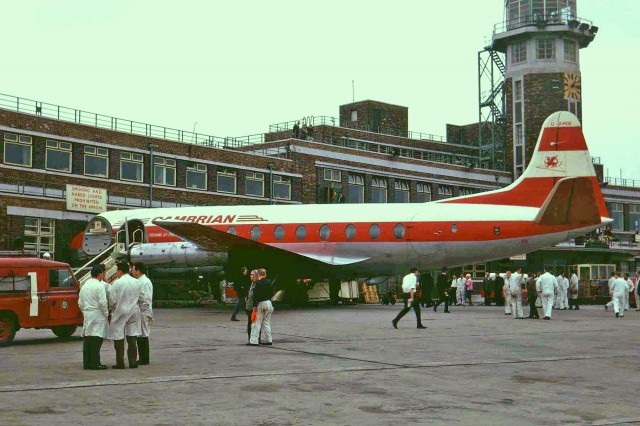
Viscount Cambrian Airways taken July 15, 1966 by Ken Fielding. Click for Larger.
That got the heart pumping a bit faster and I grabbed my camera and rushed outside. Can you imagine anyone being allowed that close to a pranged aircraft now?
The aircraft had been having hydraulic problems and had been ‘fixed’. It was being ground tested by two engineers when the hydraulics failed again, losing steering and brakes. The starboard wing hit an Aer Lingus V.800 Viscount which swung it round toward the terminal and straight into Gate 2.
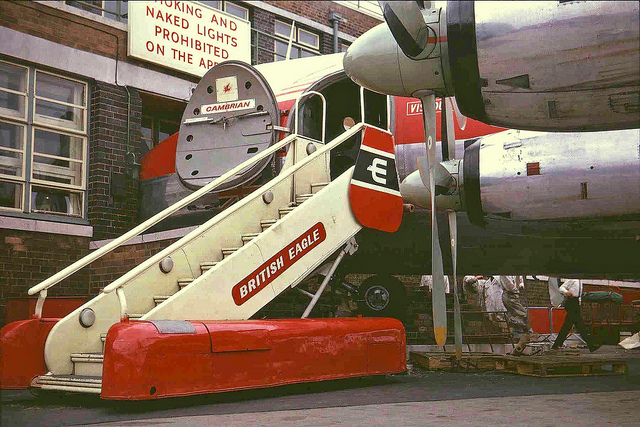
Oops. This Vickers Viscount did not stop in time. Photo by Ken Fielding. Click for Larger.
The first thing the ground crew did was straighten the props (as they would on a normal turnaround). Having demolished a couple of sets of British Eagle steps and a baggage truck, the two on the other wing needed a bit more attention. The aircraft demolished the wall at Gate 2 and you can see the broken nose-wheel resting on the wall.
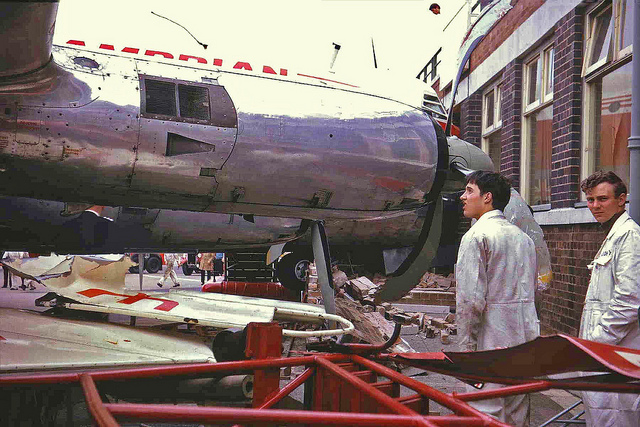
Those blades and those stairs aren't looking so great. Photo by Ken Fielding. Click for Larger.
This was outside my office window. A piece of the mangled steps can be seen (top left of center) sticking out of the aircraft roof while another piece had gone through an aircraft window.
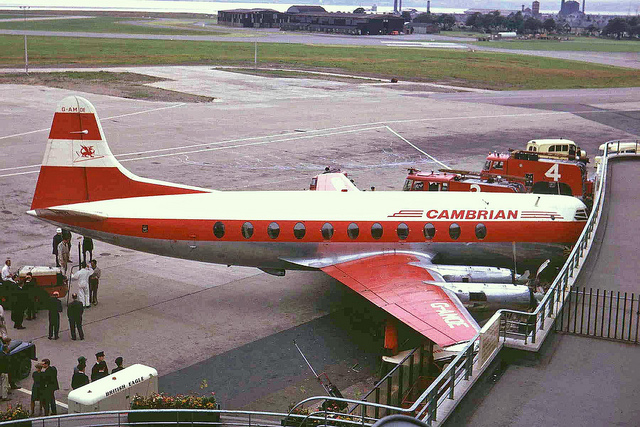
Something about this just does not look right. Photo by Ken Fielding. Click for Larger.
Cambrian Airways taxiing accident, from the upper roof terrace at Liverpool (LPL). The starboard wingtip stopped about 4 feet from my office window.
Check out Ken’s other photos on his Flickr account. If you have any questions for Ken about this incident, ask them in the comment, he will be happy to answer them.
Recently Ken Fielding shared two very interesting photos with me and I wanted to share them. I figured that it would make sense to do it on the Livery of the Week, since these two liveries are pretty sweet. Here are his photos and information on the airlines in his own words:
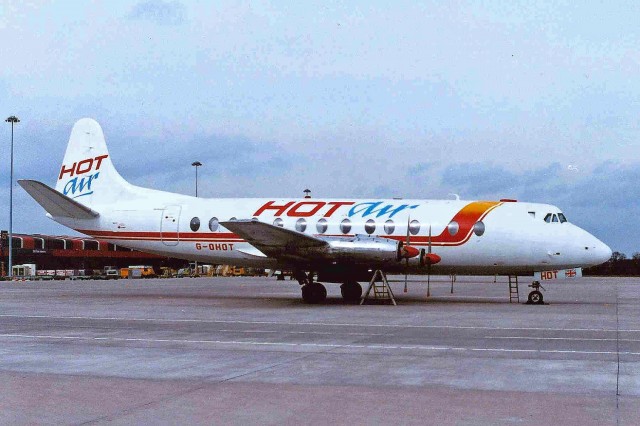
Hot Air Vickers Viscount (G-OHOT) taken at Manchester in April 1989
Apart from a mention in a ‘Defunct British Airlines’ list… nothing! So I decided to approach from the aircraft, G-OHOT.
The aircraft was one of three that had been operated by British Midland (BMA) for many years and was sold to British Aerospace in a part-exchange deal when BMA took delivery of their new B.Ae ATP’s. All three were sold at auction in Oct-87 to Sean T. Hully (Sales) Ltd. Mr Hully, trading as Hot Air in Mar-89, put the other two into service from Heathrow to Paris & Qimper in France. The airline only lasted the summer of 1989 and the aircraft were sold to British Air Ferries (BAF). However, although G-OHOT was in full Hot Air livery, it never operated for Hot Air and was leased to Baltic Airlines (another Sean T. Hully company!) and stayed with them before being sold to BAF in Nov-89. I also have a photo of it in BAF livery in Oct-90.
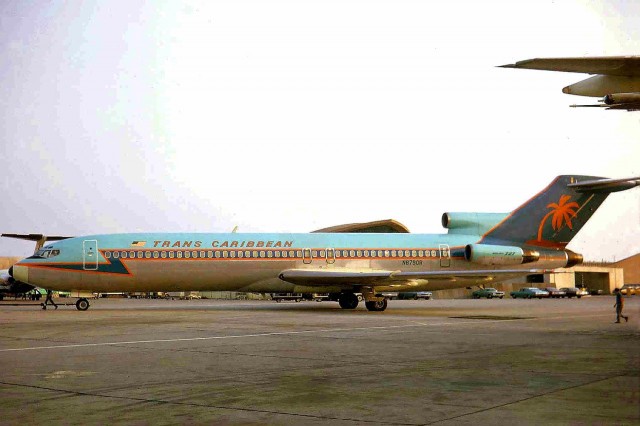
Trans Caribbean Boeing 727-200 (N8790R) taken at New York JFK on July 9, 197070
Trans Caribbean was New York based and originally date back to the late 1940’s operating DC-3’s and DC-4’s on New York/Puerto Rico charter services. They were granted full scheduled service status for New York/Puerto Rico services in Feb-57 with DC-6’s. They added two DC-9-30’s and the first of 4 DC-8-51’s joined them in Nov-61, followed by a DC-8-61CF in Dec-67. They took delivery of two B727-200’s in early 1969 and were absorbed into American Airlines at the end of 1970.
Check out Ken’s other photos on Flickr





